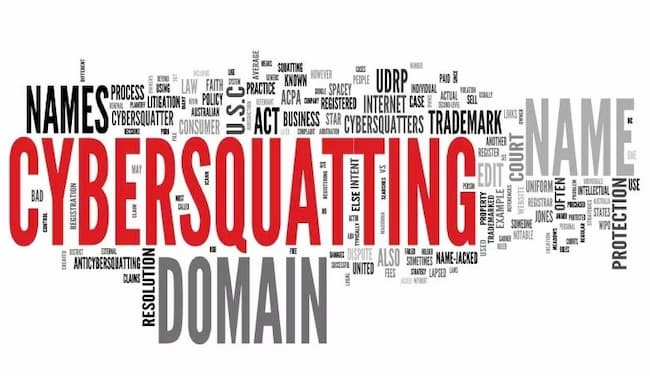The situation looks very tempting when there is an opportunity to purchase a domain that knowledgeable people associate with a brand name. Cybersquatting on the internet has allowed some unscrupulous people to get ahead by registering domains with brand names. After that, they resell them at a high price, as scammers have learned to use domains for their own purposes or to blackmail victims.
Cybersquatting
Cybersquatting is a popular activity on the internet for registering site names that sound like brand names so that they can be resold later.
There are cybersquatters on the network - these are individuals who buy up domains and register them, also known as domain investors, who work dishonestly, intentionally violating others' private rights.
Cybersquatters hunt for domains:
- whose names completely match the name of a famous brand or company;
- if such company names have been lost or not acquired in time;
- scammers specifically wait for increased interest from others in a company with a similar domain name to sell it at an inflated price.
Scammers also profit from website users who do not know that this branded domain is not managed by the brand owner. The scammers' earning scheme is to acquire as many registered domain names as possible so that honest companies incur large financial expenses in an attempt to buy the domains.
There are several types of cybersquatting:
- brand - the process of registering domains whose names match the names of famous brands, trademarks, brand names (in this case, scammers use the function of modifying the real domain and masking it with various zones);
- personal - the same domain registration, but bearing the name of a famous person;
- typosquatting - the scammer deliberately makes a mistake in the domain name when registering it, allowing participation in fraud, which confuses people who inattentively click on the link;
- geographical - the same link, carrying in its name the registration of a country, city, or locality.
Domain Fraud
Typosquatting is the most common method of fraud in cybersquatting, by which scammers direct users to fake sites that allow the user to leave their personal data here for the scammer to use, even without realizing it.
Small typos or errors, inserting or reformatting words in various foreign versions, allow scammers to confuse the user, and sometimes the carelessness of users plays into the hands of scammers. Without paying attention or reading the domain name, the victim clicks on the link and may end up on a site where the fraudster can read bank card data.
Financial Risks
Any financial project will inevitably carry financial risks, and there are several types of risks:
- Direct financial risks - when money is lost in redeeming a domain that may suit a particular company, and the scammer offers an inflated price for the purchase;
- Indirect losses include loss of trust in the brand and disappointment in its reputation, such actions are achieved by the scammer through fake links that lead to a fake site, realizing they were on a fake site, users may spread information about a low-quality site and an unscrupulous company;
- Small enterprises can also suffer domain losses, scammers quickly take advantage of the situation, buy the domain and offer it. Since small firms and enterprises do not have sufficient financial resources to buy it back, brand change and rental of a new domain may be possible
Domain Protection
To protect against scammers in the cybersquatting system, certain protective measures must be taken:
- do not announce that you plan to create any domain name;
- do not disclose the brand name and domain name that is similar so that no one can intercept it;
- there is an opportunity to refer to a free domain, after which you can come up with a name for an already occupied one;
- it would be good to monitor the freeing up of domains, and if there is a financial opportunity, register it to prevent scammers from accessing it;
- it is necessary to regularly renew the domain when required, most often the domain is fixed for one year and upon receiving a notification of the end of the registration period, it should be renewed;
- scammers also track domains whose terms are expiring and prevent receiving messages about the expiration of the domain use period;
- domain protection should be implemented through two-factor authentication;
- it is necessary to register the domain personally, without involving outsiders;
- in case of domain theft, it is necessary to go to court to provide the necessary information and rely on state assistance.
 >
>